11.1.16 Legends of the Fall
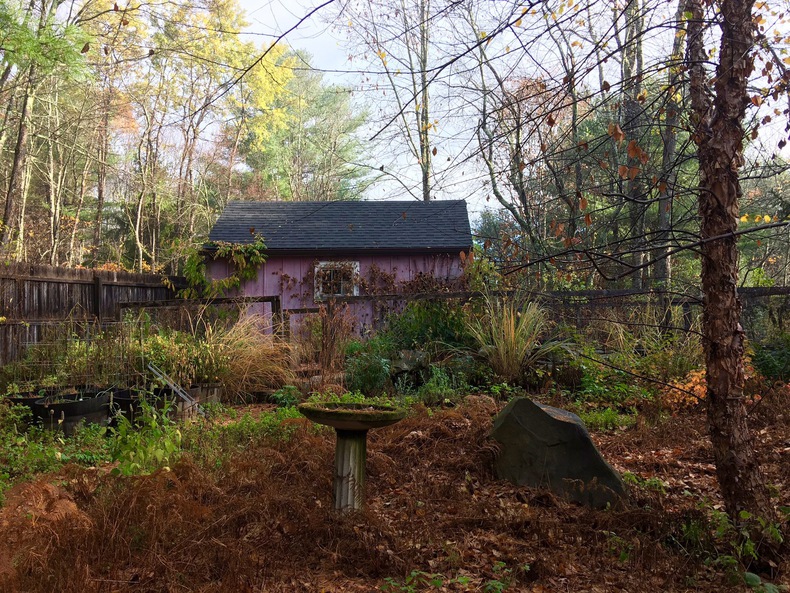
We saw leaves go to glory,
Then almost migratory
Go part way down the lane,
And then to end the story
Get beaten down and pasted
In one wild day of rain.
So wrote Robert Frost, in his poem "November." And to be sure, we've had those days here. On the heels of a killing frost last week came a smattering of snow that turned into icy rain before ushering in warmer days. A little green still clings on in the garden, as you can see above. I just harvested lots of mint and sage, both of which are drying now and will be used in my big batch of garden tea: lemongrass, lemon verbena, lemon balm, mint, anise hyssop, scented geranium, lavender, sage, chamomile, calendula and rose petals.
Dear friends and supporters, if you have not yet heard, I have relinquished my role in Fish & Bicycle. The official language is this:
Laura Silverman is leaving Fish & Bicycle to pursue other projects. She is proud to have helped create the vision and fully endorses Juliette Hermant as she brings this much-needed Catskills venture to life.
It's all true and yet says nothing of my heartache. I fear disappointing you, but I trust you to extend your kindness and compassion when I need it most. I hope whatever other projects I pursue allow me to do the things I love and share them with you.
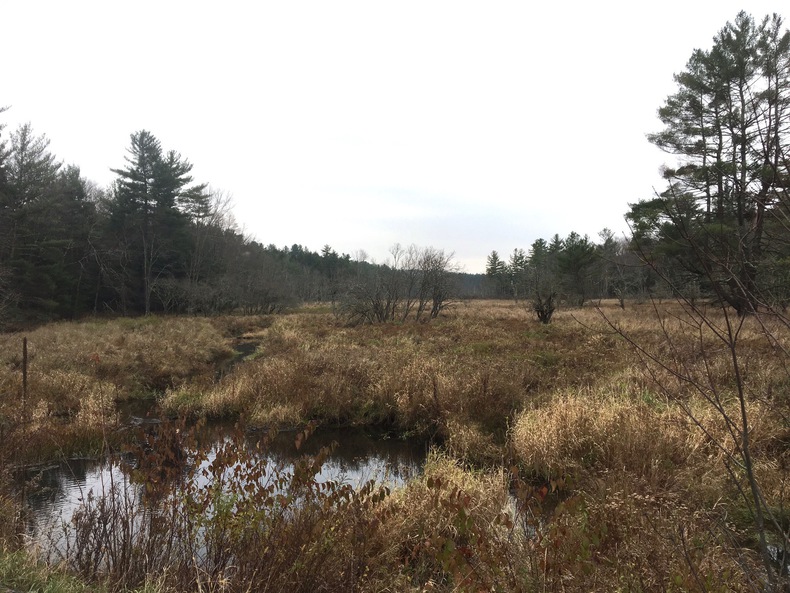
Where do you go in times of confusion and sadness? Since my childhood days, I have always felt most comfortable and comforted out in nature, and that has not changed. Daily walks in the forests and fields bring me to life. The marsh, recently filled with brilliant color, is now fading into its winter glory. Gone are the scarlet shocks of cardinal flower and the electric blue dragonflies, the fiery maple leaves and the yellow hickory. In their place is this muted study in decay, beautiful in its own right.
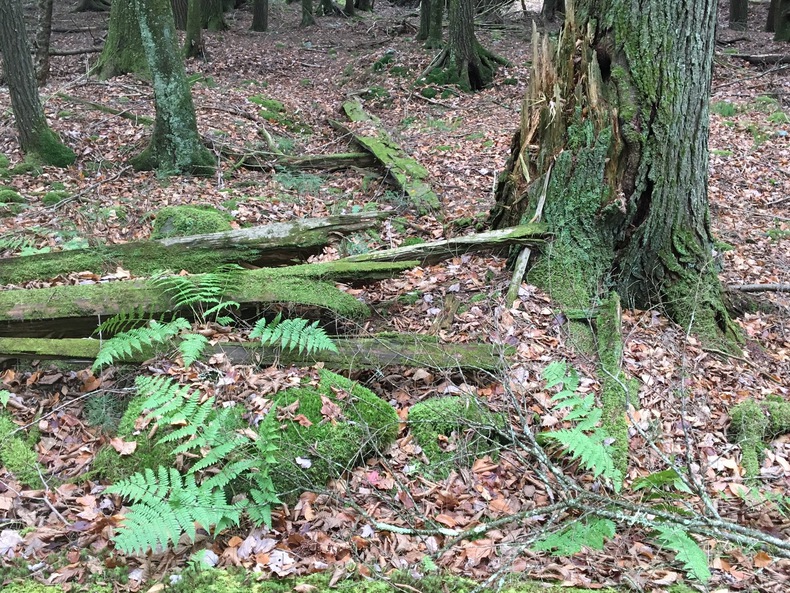
Deep in the woods, there is still enough moisture to keep things glowing green. Moss creeps over stone and wood; ferns defy the frost.
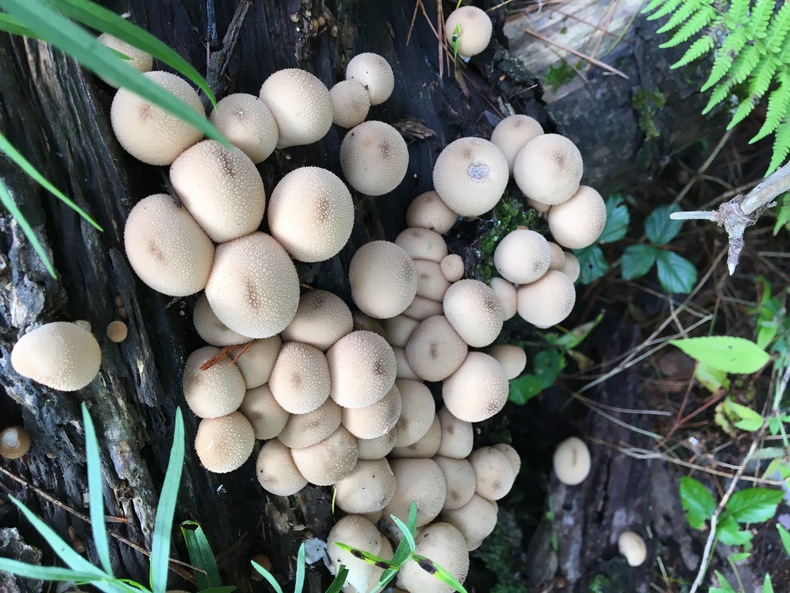
I am envious of more southern-dwelling foragers still coming upon choice edibles, as the incredibly dry summer limited my finds. Not a single lion's mane or maitake for me this year, though I did enjoy my first giant puffballs! Turns out they have an incredible texture, like a cross between a marshmallow and soft tofu. Pan-fried, their exterior turns crisp while inside they remain lush and creamy. Those above are the smaller variety, Lycoperdon pyriforme, commonly known as the pear-shaped puffball or stump puffball or, yes, the wolf-fart puffball.
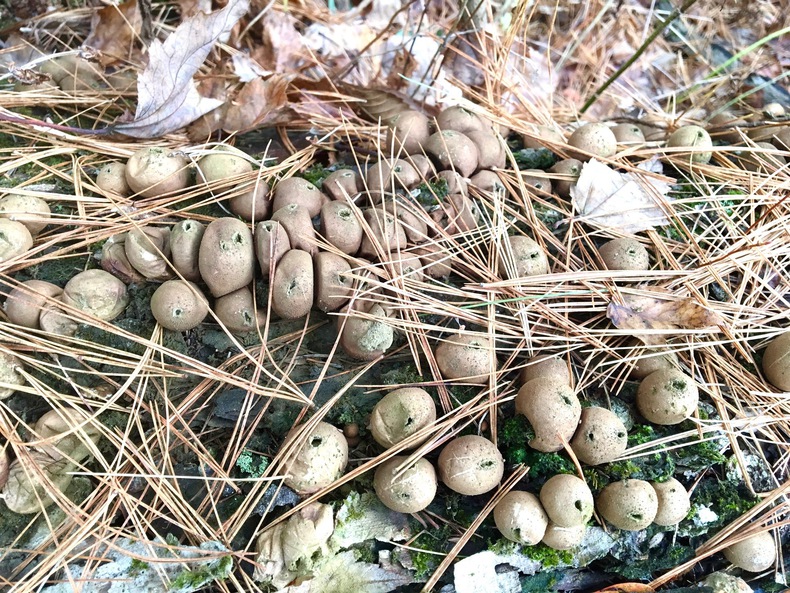
By this time in the season, they are dry and, when disturbed, readily waft clouds of dark spores (perhaps this is where the fart allusion comes in). I often pounce on them with the vigor small children reserve for mud puddles.

Commonly known as reindeer moss, this is actually a lichen. I only recently learned that lichens are actually a symbiotic relationship between algae and fungi. Apparently, this type is an important food for reindeer and thus the name, though if you squint it does look a bit like antlers.

My deep love of—some might say obsession with—mushrooms extends beyond those I can eat. Every manner of slime mold, shelf polypore and crust fungus is equally fascinating. Relatively little is known at this point of the true biodiversity of fungi, though estimates range from 1.5 million to 5 million species, with only about 5% of these having been formally classified. Boggles the mind.
These, above, are inky caps (Coprinoids), most of which have gills that liquefy as the black spores mature. In an interesting twist, inky caps are also known as "tippler's bane" because they interact negatively with alcohol. Results can be as minor as indigestion and as major as death from heart attack. Yet another great reason to be a diligent student and cautious forager.
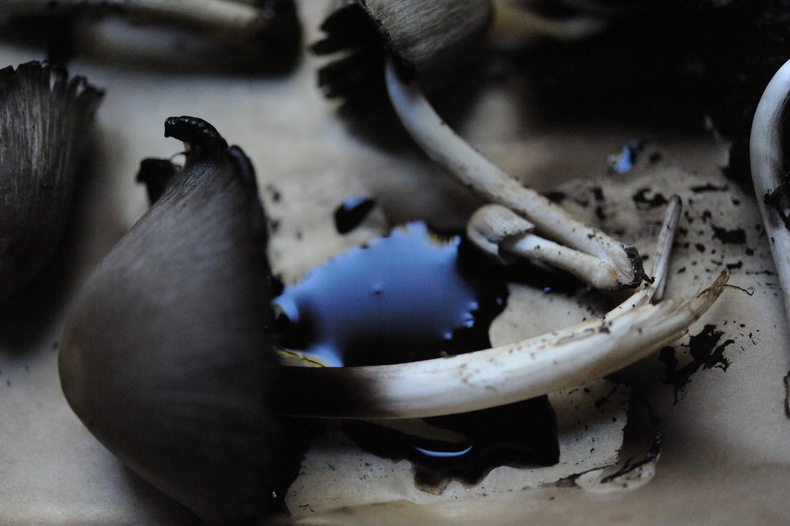
As you can see, they really do produce a watery black ink as they break down.
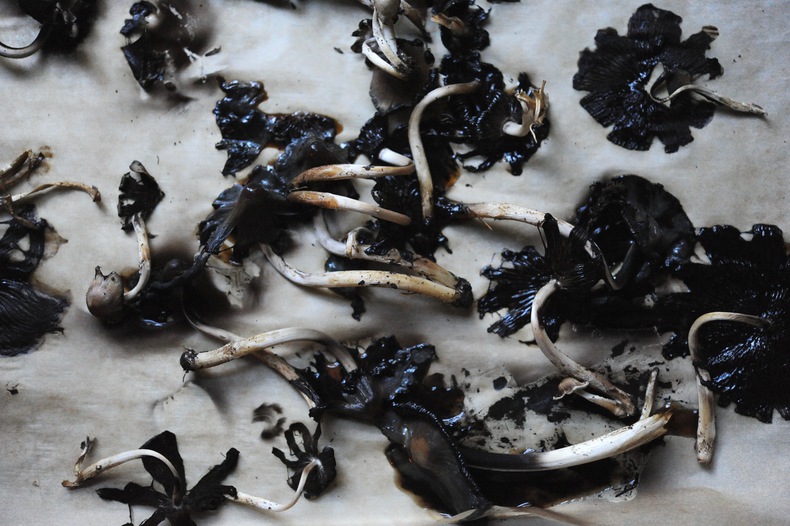
I kept these around for about 3 days to clock their progress but had to dump them when they began to exude a rather horrid fishy smell.
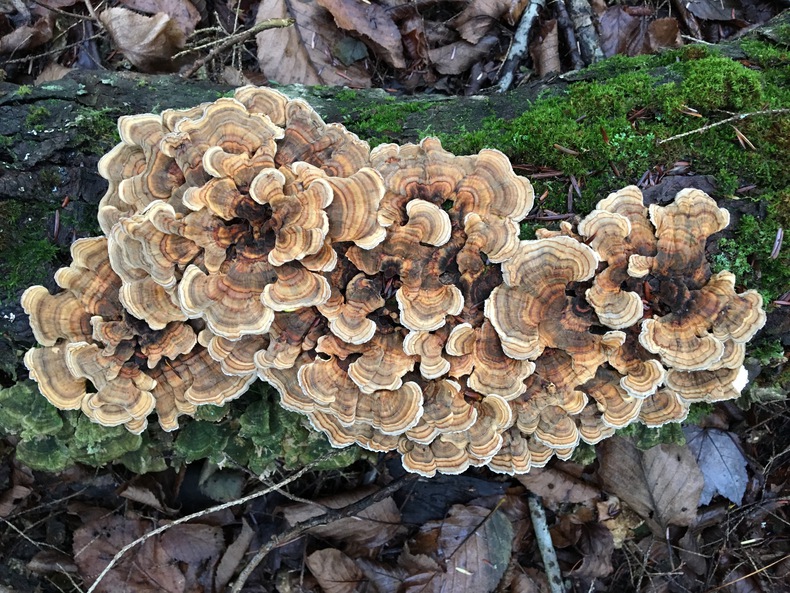
I collect turkey tail (Trametes versicolor) and dry it to use medicinally. I also combine it with other mushrooms, including reishi, chaga, shiitake, turkey tail and birch polypore in tea or soup. They make a powerful immune booster and also fight virus, bacteria and parasites. True story: G and I ate some meat that left us feeling very, very poorly. After having contracted parasites several times in the past (mostly while traveling in the Third World), we both recognized the symptoms, including bloating, gas, irregular stool and general gastrointenstinal distress, especially after eating. We sipped large mugs of this black, slightly bitter tea for just two days and fully recovered! Magic mushrooms, indeed.

I'm deeply saddened that my iPhone5 did not manage to focus properly nor capture the actual color of this amazing specimen: wolf's milk slime mold. I saw these small bubbles (half the size of a blueberry) clustered on a log and dared to pop one, only to see it ooze an even more brilliant and unexpected color. These were an intense, "unnatural" bubblegum pink and others were fluorescent orange.
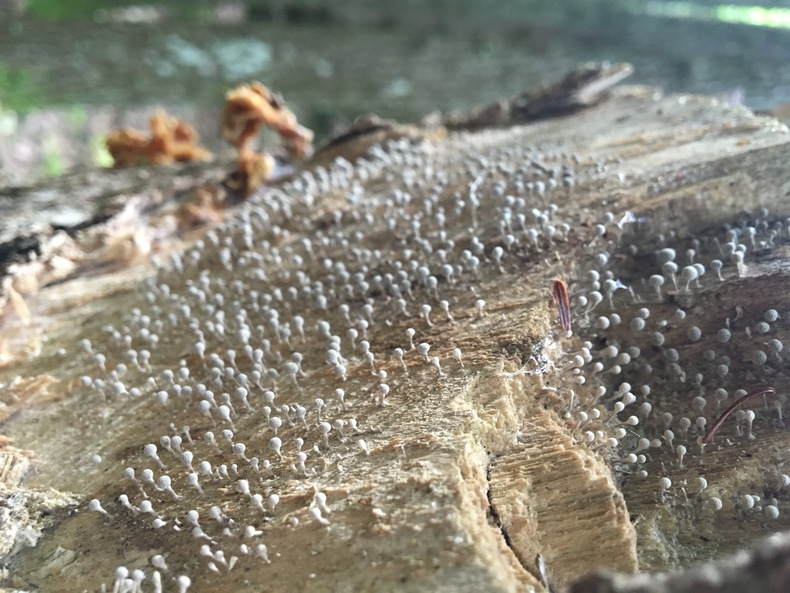
I was not able to ID these (Jack Barnett, are you out there?). I even tried googling "tiny white fungi" to no avail. They are miniscule and breathtaking.
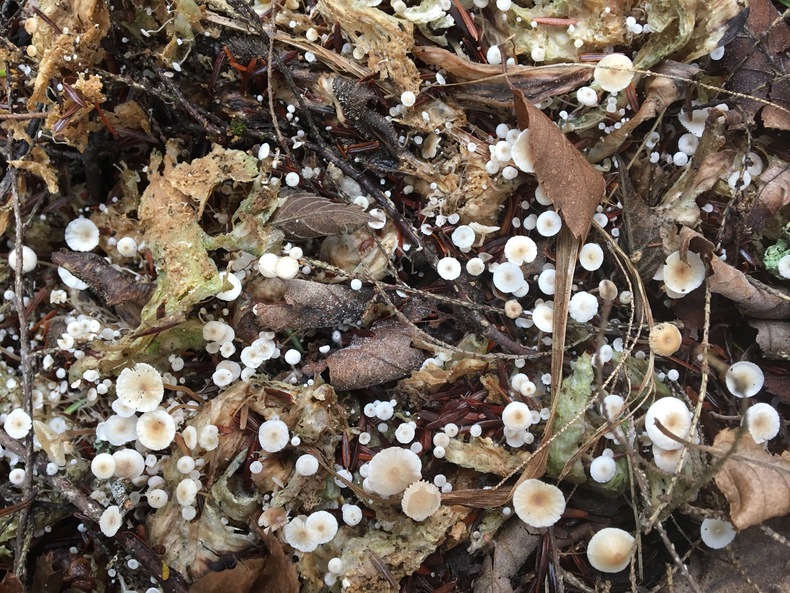
These tiny white mushrooms—possibly pleated inkcaps (Parasola plicatilis)—were growing on the site of last year's maitake. You can see decomposed shreds of it still there! This old oak stump is usually a guaranteed spot for me...sniff...
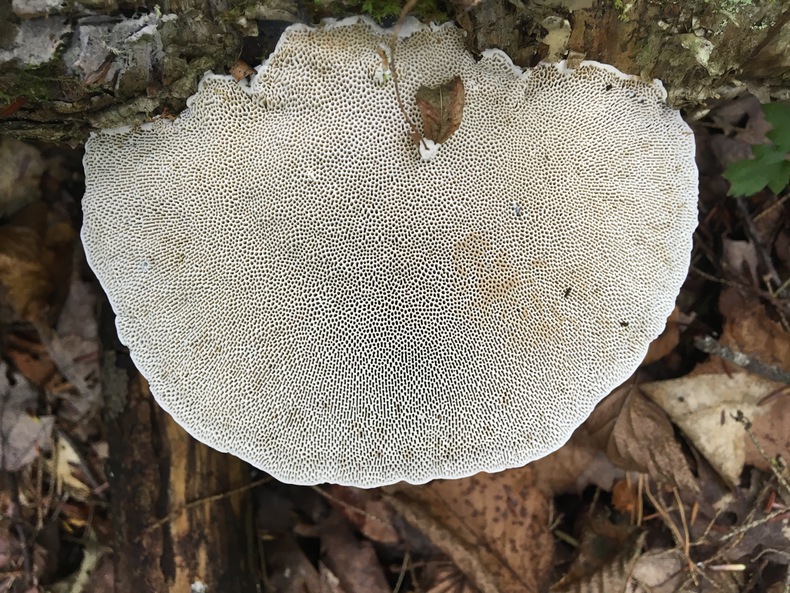
The way you start learning about mushrooms is by reading and exploring. As you go, certain defining characteristics begin to reveal themselves. Some undersides have gills, others have pores, still others are smooth and some even have "teeth."

Another step in identifying is determining the color of the spores. You do this by leaving the caps on top of a paper that is dark enough to show pale spores and light enough to contrast with dark ones. (The young birch polypores and turkey tail are not being spore-printed, just sharing the same tray.)
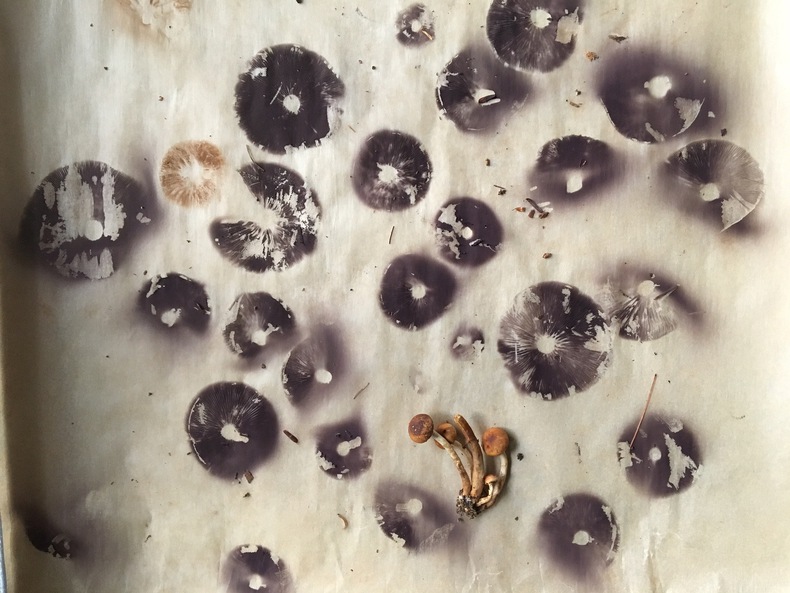
What I thought were edible honey mushrooms turned out not to have the white spores I anticipated. Good thing I checked or I'd be writing this from the grave! A little gallows humor for you on this All Saint's Day. But please do remember the forager's aphorism, "When in doubt, throw it out." (For more on foraging, check out my article, Foraging: A Love Story, in the fall issue of Edible Hudson Valley.)
What I won't be throwing out is this spore print, whose wabi-sabi beauty reminds me to cherish the unexpected and move without fear into the unkown.






26 Comments